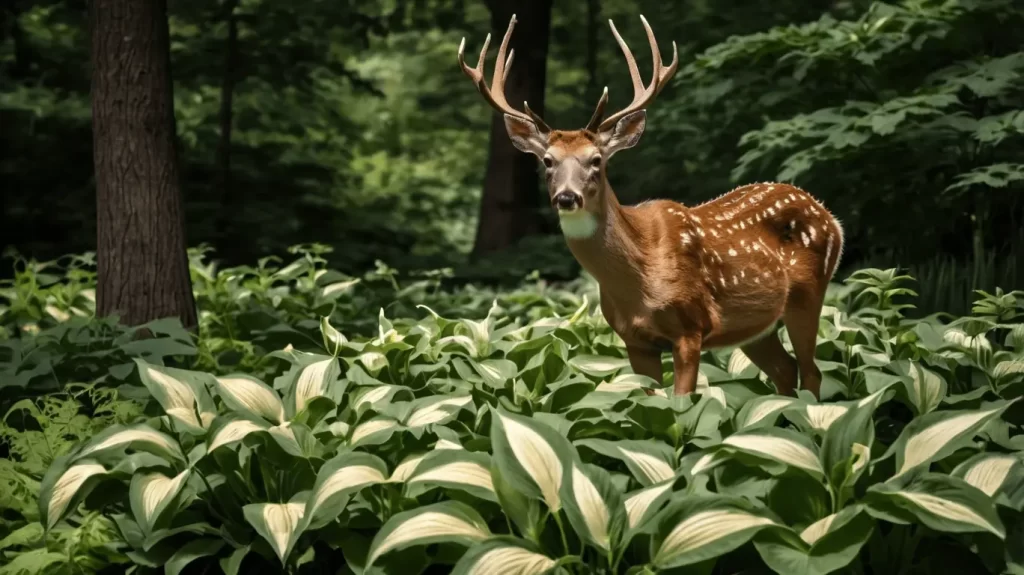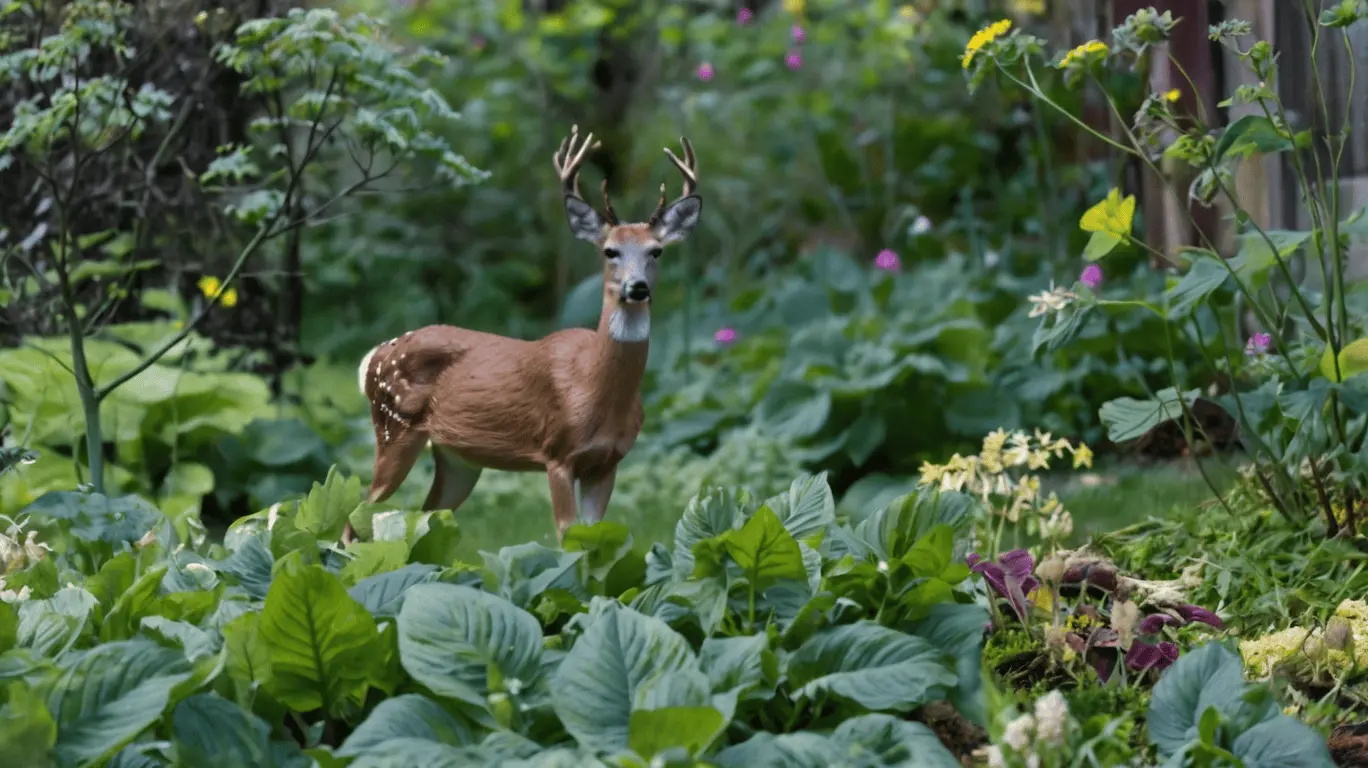Hostas are popular shade-loving perennials that gardeners cherish for their large, lush foliage and easy maintenance. However, deer also find these plants irresistible, often turning beautiful Hosta gardens into grazing grounds. While deer are one of the most persistent pests that can destroy your Hostas, there are effective ways to protect your plants and keep them thriving throughout the growing season.
In this article, we’ll explore how to recognize deer damage to Hostas and provide you with five effective strategies to deter deer from eating your Hostas. Additionally, we’ll suggest some alternative plants that deer tend to avoid.
How to Identify If Deer Are Eating Your Hostas
Before taking action to protect your Hostas, it’s essential to confirm that deer are the culprits. Deer tend to feed on Hostas by leaving behind jagged or torn edges on the leaves, which is a telltale sign of grazing. Unlike other animals that might nibble at your plants, deer feed at a higher level, typically around 18-24 inches off the ground. They are known to target the taller stalks of the Hosta’s flower spikes, leaving them bare or severely damaged.
If you notice that multiple Hostas in your garden are damaged simultaneously, it’s a strong indication that deer are responsible. These animals often graze in groups, and their extensive feeding habits can devastate a garden in just one night. While rabbits, slugs, and snails can also damage Hostas, their feeding patterns differ. Rabbits tend to focus on leaves closer to the ground, while slugs and snails leave small holes behind.
Signs of Deer Damage:
- Jagged or torn edges on the leaves.
- Damage at a height of 18-24 inches.
- Multiple plants damaged in a single night.
- Bare flower stalks.
5 Tips for Keeping Deer Away From Hostas

Once you’ve confirmed that deer are munching on your Hostas, it’s time to take action. Here are five proven strategies to help keep these persistent animals at bay.
1. Physical Barriers: Install Tall Fencing
One of the most effective ways to prevent deer from reaching your Hostas is to install a tall fence around your garden. The fence needs to be at least 8 feet high to stop deer from jumping over it. While you can use a variety of materials for the fence, such as wire or wood, the height is the most critical factor in deterring deer.
In addition to traditional fences, you can also use netting or row covers to protect your plants. These options are particularly useful if you have a smaller garden or specific areas that you want to shield from deer. However, it’s essential to ensure that the netting or covers are tall enough to be effective.
2. Repellents: Use Scent-Based Deterrents
Another strategy for keeping deer away from your Hostas is to use commercial repellents that rely on strong odors to deter them. Repellents made from blood meal or predator scents work well because deer are naturally cautious of predators. These products release a scent that signals danger to deer, keeping them away from your plants.
While repellents can be effective, it’s important to note that deer may eventually get used to the smells, rendering the repellents less effective over time. To maintain their potency, you may need to switch up the types of repellents you use or apply them more frequently.
3. Natural Oils: Spray Strong-Scented Oils Around Your Hostas
If you prefer a more natural approach, you can use essential oils like peppermint, lavender, garlic, or eucalyptus as a deterrent. These oils have strong scents that deer find unpleasant, making them less likely to venture near your garden.
To use this method, mix a few drops of oil with water and spray the solution on and around your Hostas. Before applying the mixture widely, be sure to test it on a small area of your plants to ensure that it won’t cause any harm. Some Hosta varieties can be more sensitive than others, so it’s essential to proceed cautiously.
4. Opt for Deer-Resistant Hosta Varieties
While no Hosta variety is completely immune to deer, some types are less appealing due to their texture. Hostas with thicker, more textured leaves, like the Blue Mouse Ears variety, are less likely to be devoured by deer. Deer tend to prefer plants with tender, smooth foliage, so opting for tougher varieties can reduce the likelihood of your plants being eaten.
5. Use Sound and Movement to Scare Deer
Deer are naturally skittish and tend to avoid unfamiliar sounds or movements. Installing wind chimes or hanging reflective materials, like aluminum foil, near your Hostas can startle deer and make them think twice before approaching your garden.
This method may not work with all deer, as some may become accustomed to the sounds or movements over time. However, it can be a useful addition to your overall deer-deterrent strategy, especially when combined with other methods like fencing or repellents.
Hosta Plant Alternatives That Deer Won’t Eat
If you’re finding it difficult to keep deer away from your Hostas, consider planting alternatives that are less appealing to these animals. Here are some deer-resistant plants that thrive in similar growing conditions as Hostas:
1. Hellebores (Helleborus)
Hellebores are shade-loving plants like Hostas, but they have one significant advantage: they are toxic to deer. Because of this, deer tend to avoid them altogether. Hellebores bloom in early spring, adding color to your garden before many other plants have even started to grow.
2. Heuchera (Coral Bells)
Heuchera, also known as Coral Bells, is another shade-loving perennial that deer tend to avoid. Its rough-textured leaves and delicate flower spikes are unappealing to deer, making it an excellent alternative to Hostas. Coral Bells come in a wide variety of colors and are relatively easy to care for.
3. Ferns (Japanese Painted Fern)
Ferns, such as the Japanese Painted Fern, are another great option for a shade garden. Deer do not eat ferns because they offer little nutritional value. With their striking silver foliage, ferns can provide texture and visual interest in areas where Hostas might otherwise be eaten.
4. Bergenia (Bergenia cordifolia)
Bergenia is another excellent alternative to Hostas. These plants feature thick, glossy leaves and dense clusters of pink flowers. Bergenia plants are also toxic to deer, making them less likely to attract unwanted grazers. They thrive in shaded areas and can bring vibrant color to your garden.
Conclusion
Hostas may be a favorite snack for deer, but that doesn’t mean you have to surrender your garden to these persistent pests. By using physical barriers like tall fencing, applying repellents, experimenting with natural oils, and selecting deer-resistant Hosta varieties, you can protect your plants from damage. If all else fails, consider planting alternative shade-loving plants that deer are less likely to eat.

